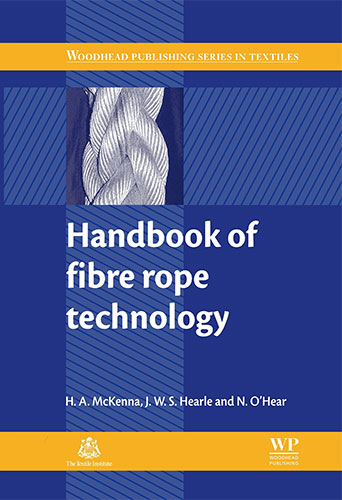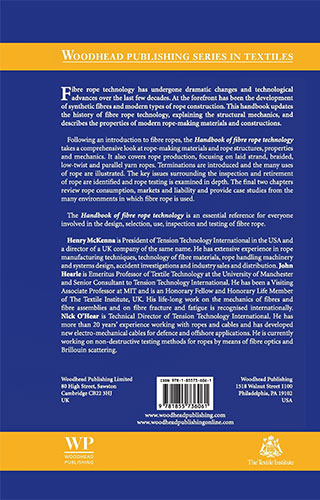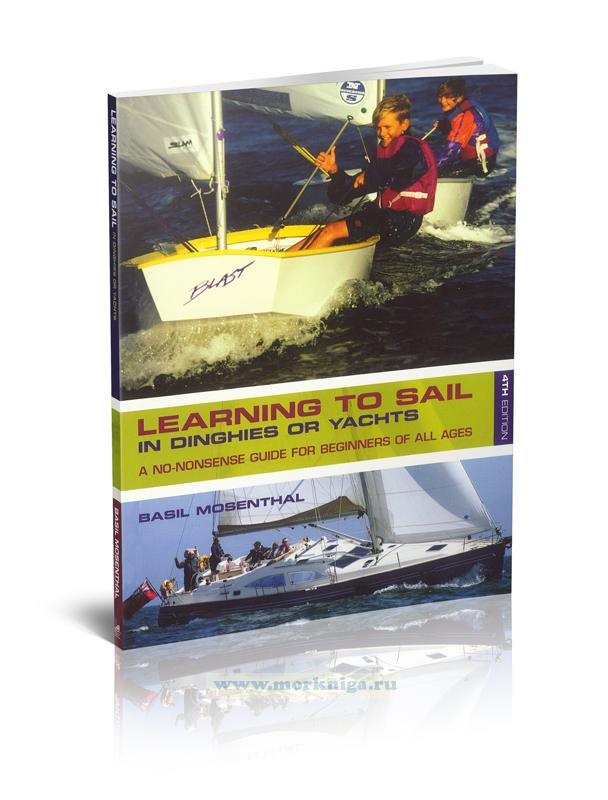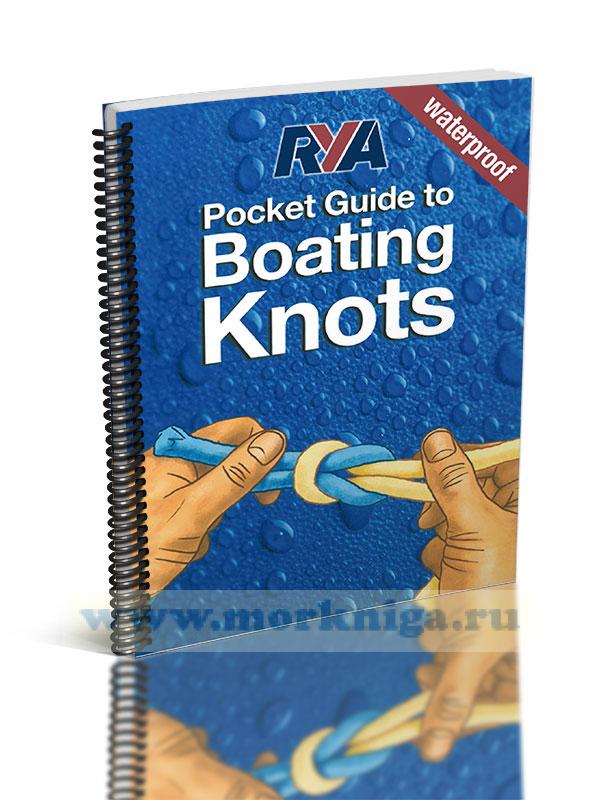Handbook of fibre rope technology/Справочник по технологии волокнистых канатов
Издание на английском языке
The field of fibre rope technology has witnessed incredible change and technological advance over the last few decades. At the forefront of this change has been the development of synthetic fibres and modern types of rope construction. This handbook updates the history and structural mechanics of fibre rope technology and describes the types and properties of modern rope-making materials and constructions. Following an introduction to fibre ropes, the Handbook of fibre rope technology takes a comprehensive look at rope-making materials, rope structures, properties and mechanics and covers rope production, focusing on laid strand, braided, low-twist and parallel yarn ropes. Terminations are also introduced and the many uses of rope are illustrated. The key issues surrounding the inspection and retirement of rope are identified and rope testing is thoroughly examined. The final two chapters review rope markets, distribution and liability and provide case studies from the many environments in which fibre rope is used.
The Handbook of fibre rope technology is an essential reference for everyone assisting in the design, selection, use, inspection and testing of fibre rope.
Contents
Preface
Acknowledgements
Author contact details
Disclaimer
Chapter 1 Introduction to fibre ropes
1.1 Ropes from ancient times to the mid-twentieth century
1.2 Advances since 1950
1.3 Rope issues
1.4 Diversity and choice
Chapter 2 Ropemaking materials
2.1 Range of materials
2.2 Natural fibres
2.3 General-purpose synthetic polymers
2.4 High-modulus, high-tenacity (HM-HT) fibres
2.5 Fibre mechanical properties
2.6 Other fibre properties
2.7 Other rope components
Chapter 3 Rope structures
3.1 Introduction to rope structures
3.2 Formation of rope structures
3.3 Laid rope
3.4 Plaited rope
3.5 Hollow braid rope
3.6 Double-braid (braid-on-braid) rope
3.7 Braided rope with jacket
3.8 Solid braid rope
3.9 Parallel strand rope
3.10 Kernmantle rope
3.11 Parallel yarn rope
3.12 Wire-rope type construction
Chapter 4 Properties of rope
4.1 Rope dimensions
4.2 Strength and weight
4.3 Elongation
4.4 Energy absorption
4.5 Fatigue
4.6 External abrasion resistance
4.7 Friction
4.8 Ultra-violet exposure
4.9 Temperature
4.10 Chemical and biological attack
4.11 Shrinkage
4.12 Spliceability
4.13 Knot retention
4.14 Hardness
Chapter 5 Rope mechanics
5.1 Introduction
5.2 Tension, torque, elongation and twist
5.3 Predicting rope properties
5.4 An alternative approach
5.5 Bending stiffness
5.6 Variability
5.7 Fatigue and durability
5.8 Hockling and snarling
5.9 System effects
Chapter 6 Rope production
6.1 Introduction
6.2 Production of rope yarns
6.3 Strand manufacture
6.4 Production of three- and four-strand rope
6.5 Production of braided rope
6.6 Production of low-twist rope
6.7 Production of parallel-yarn rope
6.8 Post-production treatments
6.9 Quality considerations
Chapter 7 Terminations
7.1 Fibre rope terminations
7.2 Splicing
7.3 Splice mechanics
7.4 Mechanical terminations
7.5 Socketed terminations
7.6 Thimbles and pins
7.7 Wire rope clips and swaged sleeves
7.8 Cleats, bitts and bollards
7.9 Stoppers
7.10 Knots, bends and hitches
Chapter 8 Use of rope
8.1 Introduction
8.2 Safe use guidelines
8.3 Rope uses
8.4 Guidelines for using rope
Chapter 9 Inspection and retirement
9.1 Introduction
9.2 Basis for inspection and retirement
9.3 Rope materials and constructions
9.4 Inspection and retirement programme
9.5 Used rope inspection and evaluation
9.6 Disposition following inspection
9.7 Types and effects of damage
Chapter 10 Testing
10.1 Introduction
10.2 Reasons for testing
10.3 Safety in testing
10.4 Terminations for strength testing
10.5 Strength and elongation test equipment
10.6 Strength instrumentation
10.7 Elongation instrumentation
10.8 Strength and elongation testing procedures
10.9 Size, linear density, lay and braid cycle lengths
10.10 Length
10.11 Cyclic loading tests
10.12 Flex fatigue testing
10.13 External abrasion resistance testing
10.14 Creep testing
10.15 Hardness testing
10.16 Testing for fibre properties
10.17 Synthetic fibre identification
Chapter 11 Consumption, markets and liability
11.1 Introduction
11.2 Consumption of fibre rope
11.3 Markets
11.4 Distribution
11.5 Liability
11.6 Conclusion
Chapter 12 Case studies
12.1 Diversity of ropes
12.2 Riser protection nets
12.3 Deepwater moorings
12.4 Supply vessel moorings
12.5 Facing wires for pusher tugs
12.6 Parallel yarn ropes: antenna stays and other uses
12.7 Kinetic energy recovery rope
12.8 Failure and success with Kevlar aramid ropes
12.9 Investigating failure
12.10 Climbing ropes
12.11 Sailing and yachting
12.12 Mussel ropes
Appendix I Quantities and units
Appendix II Braid and plait terminology
Appendix III UK trade data
Appendix IV The theory of backtwist
Glossary
References
Index





 Learning to Sail. Учимся плавать
Learning to Sail. Учимся плавать  RYA Pocket Guide to Boating Knots. Карманный справочник RYA по лодочным узлам
RYA Pocket Guide to Boating Knots. Карманный справочник RYA по лодочным узлам